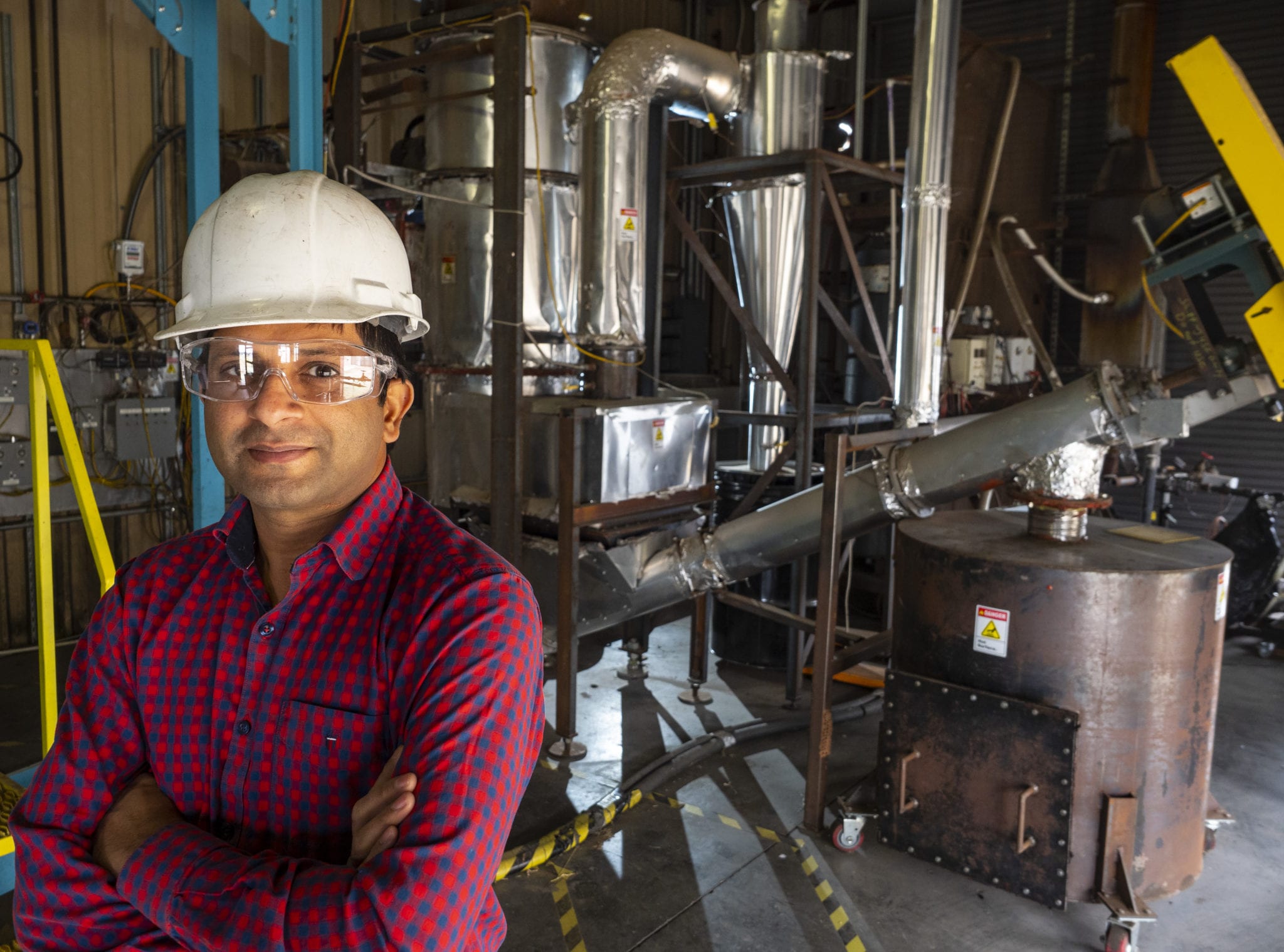Switchgrass – a native species throughout Oklahoma – is an apt symbol for the state’s green-energy movement.
Just as switchgrass takes hold and multiplies, federal seed money planted years ago has produced cutting-edge technology in the biofuels industry.
An example is a mobile generator that converts biomasses – from the ubiquitous switchgrass to everyday yard waste – into electricity. A prototype of this down-draft gasifier, patented by Oklahoma State University, awaits commercialization through OSU’s New Product Development Center.
Ray Huhnke, Ph.D., regents professor of biosystems and agricultural engineering at OSU, says the gasifier is one of many educational, research and commercial projects deriving from $15 million awarded by the National Science Foundation between 2008 and 2013.
Huhnke is also project director and principal investigator for Oklahoma’s Established Program to Stimulate Competitive Research (commonly called EPSCoR), which the National Science Foundation established in 1985. He says the group used the award money to “provide energy security for the country and spur rural economic development by utilizing the biomass in those settings.”
The gasifier is marketed by OSU junior Cody Vinyard, a mechanical engineering major who works for Robert Taylor, Ph.D., director of the New Product Development Center. Vinyard’s startup, Provin Technologies, has pursued state and federal funding and recently received a $200,000 commitment from the city of Stillwater, which intends to convert lawn clippings, leaves and tree limbs into electricity. That electricity will go into the grid with Stillwater receiving monetary credits.
“The city has had a problem with yard waste and paying to have it hauled off and dumped,” says Vinyard, a 28-year-old Air Force veteran from Stillwater. “We got this system and offered them a chance to jump in.”
Huhnke, an OSU faculty member for nearly 40 years, says the venture reflects “the overall mission of EPSCoR – providing opportunities for researchers, educators, undergraduates, graduate students and K-12 students to make the state competitive in science and technology. We always seek ways of getting licenses with companies to utilize our technologies and patents in a commercial setting.”
Huhnke says the gasifier, designed to fit in a shipping container, can also provide electricity to areas with power outages or places off the grid, such as war zones.
Huhnke says other non-food plants, besides switchgrass, are potential biofuels, especially various types of sorghum.
“The research we do on these crops can be translatable to other crops as far as converting them into energy,” he says.
Taylor, the product center director for nine years, says a grant from the Oklahoma Center for Advancement of Science and Technology should come through around Aug. 1 “and, 18 months after that, we should fire up the yard waste-processing system.”
Taylor says OSU’s gasifier meets California specifications for emissions and wastes little energy because it converts biomasses into electricity at relatively low temperatures. He and Vinyard say another byproduct of the conversion process is biochar, a substance rich in carbon that enhances soil’s nutrients.
“The syngas [hydrogen, carbon monoxide and some carbon dioxide] produced by our system is very clean,” says Taylor, adding that after the Stillwater system has been online for six months, “we’ll go to market [possibly with] some companies we’ve engaged in the past.”
Vinyard concludes, “It’s a win-win-win – for the buyer of the system because it saves money, for the seller because it makes money, and for the environment because it’s all clean.”


























